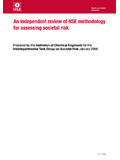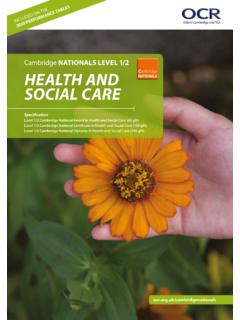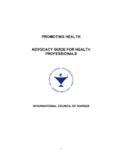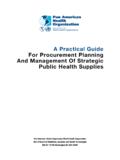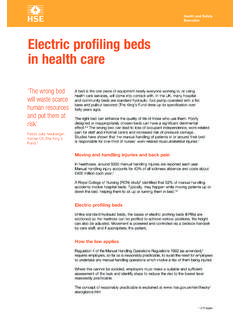Transcription of Working aloneHealth and safety guidance on the risks of ...
1 health and safety Executive Working alone health and safety guidance on the risks of lone Working Introduction This leaflet provides guidance on how to keep lone workers healthy and safe. It is aimed at anyone who employs or engages lone workers, and also at self-employed people who work alone . Following the guidance in the leaflet is not compulsory, but it should help employers understand what they need to do to comply with their legal duties towards lone workers under: the health and safety at Work etc Act 1974.
2 The Management of health and safety at Work Regulations 1999. This is a web-friendly Is it legal to work alone and is it safe? version of leaflet INDG73(rev3), Working alone is not in itself against the law and it will often be safe to do so. published 05/13 However, the law requires employers to consider carefully, and then deal with, any health and safety risks for people Working alone . Employers are responsible for the health , safety and welfare at work of all their workers. They also have responsibility for the health and safety of any contractors or self-employed people doing work for them.
3 These responsibilities cannot be transferred to any other person, including those people who work alone . Workers have responsibilities to take reasonable care of themselves and other people affected by their work activities and to co-operate with their employers in meeting their legal obligations. Who are lone workers and what jobs do they do? Lone workers are those who work by themselves without close or direct supervision, for example: In fixed establishments A person Working alone in a small workshop, petrol station, kiosk or shop People who work from home other than in low-risk, office-type work (separate guidance covers homeworkers doing low-risk work see the end of the leaflet for details).
4 People Working alone for long periods, eg in factories, warehouses, leisure centres or fairgrounds People Working on their own outside normal hours, eg cleaners and security, maintenance or repair staff Page 1 of 5. health and safety Executive As mobile workers Working away from their fixed base Workers involved in construction, maintenance and repair, plant installation and cleaning work Agricultural and forestry workers Service workers, including postal staff, social and medical workers, engineers, estate agents, and sales or service representatives visiting domestic and commercial premises How must employers control the risks ?
5 Employers have a duty to assess risks to lone workers and take steps to avoid or control risks where necessary. This must include: involving workers when considering potential risks and measures to control them;. taking steps to ensure risks are removed where possible, or putting in place control measures, eg carefully selecting work equipment to ensure the worker is able to perform the required tasks in safety ;. instruction, training and supervision;. reviewing risk assessments periodically or when there has been a significant change in Working practice.
6 This may include: being aware that some tasks may be too difficult or dangerous to be carried out by an unaccompanied worker;. where a lone worker is Working at another employer's workplace, informing that other employer of the risks and the required control measures;. when a risk assessment shows it is not possible for the work to be conducted safely by a lone worker, addressing that risk by making arrangements to provide help or back-up. Risk assessment should help employers decide on the right level of supervision.
7 There are some high-risk activities where at least one other person may need to be present. Examples include: Working in a confined space, where a supervisor may need to be present, along with someone dedicated to the rescue role;. Working at or near exposed live electricity conductors;. Working in the health and social care sector dealing with unpredictable client behaviour and situations. Employers who have five or more employees must record the significant findings of all risk assessments. Employers also need to be aware of any specific law that prohibits lone Working applying in their industry.
8 Examples include supervision in diving operations, vehicles carrying explosives and fumigation work. Further information about controlling risks can be found on the HSE website at: Further sources of information are listed at the end of the leaflet. Working alone : health and safety guidance on the risks of lone Working Page 2 of 5. health and safety Executive What must employers consult on? By law, employers must consult all their employees on health and safety matters. Effective consultation will also help ensure that relevant hazards are identified, and appropriate and proportionate control measures are chosen.
9 You can find more advice on HSE's website: Which particular problems affect lone workers? Lone workers should not be put at more risk than other employees. Establishing a healthy and safe Working environment for lone workers can be different from organising the health and safety of other employees. Some of the issues that need special attention when planning safe Working arrangements are set out in the following pages, but your risk assessment process should identify the issues relevant to your circumstances.
10 Can one person adequately control the risks of the job? Employers should take account of normal work and foreseeable emergencies, eg fire, equipment failure, illness and accidents. Employers should identify situations where people work alone and consider the following: Does the workplace present a specific risk to the lone worker, for example due to temporary access equipment, such as portable ladders or trestles that one person would have difficulty handling? Is there a safe way in and out for one person, eg for a lone person Working out of hours where the workplace could be locked up?





